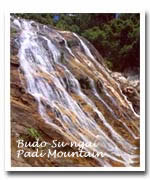

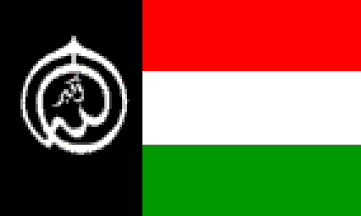
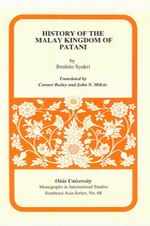
History Of
Patani
Introduction
Chapter One
Chapter Two
Chapter
Three
Chapter Four
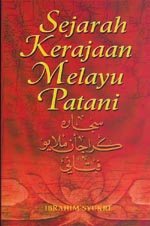
Sejarah Kerjaan
Patani
Pesanan Ibrahim Syukri
Pengenalan
Bab Satu
Bab Dua
Bab Tiga
Bab Empat
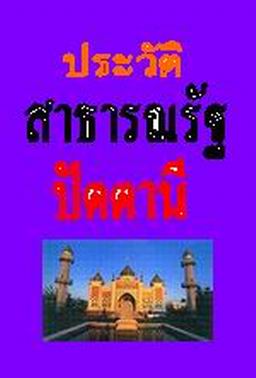
ประวัติปัตตานี
ข้อความจากผู้แปล
บทนำ
บทที่หนึ่ง
บทที่สอง
บทที่สาม
บทที่สี่
Others
The Queens Of Patani
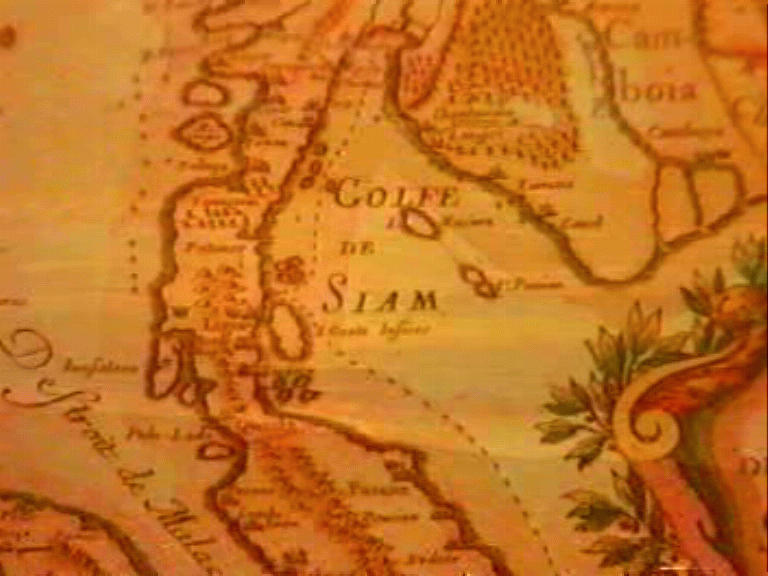
CHAPTER 1: MALAY IN ANCIENT TIMES.
Tanah Melayu (Malay Land)
Malaya is a peninsula which stretches southward from and is situated at the southeastern part of the continent of Asia, possessing an extensive area. Beginning in the north it stretches from the Kra Isthmus to the top of Malaya, including Singapura to the south.
In the north this peninsula joins Siam which is located between two kingdoms, on its left the kingdom of Burma and on its right the kingdom of Annam which is called French Indochina. The kingdom of Siam, Annam and Burma are located in a large peninsula, the peninsula of Indochina.
The peninsula of Malaya has two parts, the northern part and the southern. Its northern part begins at the Kra Isthmus and reaches to the provinces (jajahan) of Setul, Singgora, Yala, and Benggera. Currently the people of these provinces are included among the subject of the kingdom of Siam or Thailand. A large number of the inhabitants of the northern part of this peninsula are Siam-Thai, but in the six provinces of Setul, Cenak, Tiba, Patani, Yala, and Benggenara the majority are Malays.
The southern part of this peninsula begins at the border of the Siam-Thai provinces previously mentioned down to the tip of the Malay Peninsula, including the island of Singapura. In this part exist several Malay kingdoms today: Kedah, Perlis, Kelantan, Terengganu, Perak, Pahang, Selangor, Negeri Sembilan, Johor, Melaka, Pulau Pinang, and Singapura.
Although this peninsula has been called Malaya, the Malays were not the original people (bangsa) to inhabit it. The Malays were the last people to settle and reside in the peninsula after it had first been inhabited by several other peoples.
The first people to inhabit the peninsula of Malaya, according to information in history books, were people of a primitive type. Later it was settled by Hindus who came from India, after which is ruled by the Siam-Asli who came from Siam. Only later did the Malays arrive.
Briefly below there follows a short historical explanation of event in Malaya during ancient times.
There was a time a few hundred years before the birth of Christ when Malaya was not yet inhabited by civilized types of people as it is today. The land was covered with jungle and undergrowth and was inhabited by many kinds of wild animals.
Under the shelter of thick jungle and together with the wild animals there were two kinds of human beings of a primitive type who were able to make their own dwellings. The were the Semang (Pangan) people and the Sakai people. Although both people are called human, actually their condition and way of life were still primitive, and far from the ways of civilized human.
Several hundred years before the birth of Christ, the Hindus from India began to arrive in Malaya. At that time the Hindus had attained a high level of progress and culture in India. They arrived in Malaya with the intention of expanding their livelihood beyond their country. Malaya attracted them to come to this area of eastern of Asia by its wealth, prosperity, and fame.
The path taken by the Hindus to East Asia at that time followed by two routes, land and sea. By the land routes they traveled via Burma, entering the lands of Siam and Annam. By the sea route journeyed from India, sailing ships across the India Ocean, and entered Malaya and all the southern islands, including Sumatera, Java, Bali, Brunei, and others. The went as far as Siam, Cambodia, and Annam.
As a people which had a high culture in India, the Hindus possessed their own customs, traditions, and religion. Wherever they lived the firmly clung to their customs, traditions, and religion and they practiced them as though they were in their homeland of India.
Because the Hindus possessed a high culture with well-organized customs and traditions, the eastern inhabitants were drawn to imitate or follow the actions of the Hindus. Eventually the Hindus became teachers who taught the inhabitants of the East their customs, traditions, and religion. In this way, as time passed all inhabitants of the East completely accepted the customs and traditions of the Hindus. Although the religion of the Hindus was of many kinds, nevertheless the best known were two religions, Brahmanism and Buddhism. Brahmanism is a religion that worships gods or goddesses and also ghosts and spirits and is divided into several sects according to which of the six gods are worshipped. Those who worship Siva for example, are therefore called people of the Siva sect. while those who worship the god Vishnu are called people of the Vishnu sect and so on for other sects.
The gods worshipped by the Hindus are very numerous and it would be of no use for us to mention them here. It is only necessary to note that this religion is the oldest in India and is still actively practiced. Meanwhile, more than two thousand years ago, there appeared a great teacher in India who purified the faith of India and taught a new faith called Buddhism to his followers.
When the great teacher Buddha died, Buddhism split into several sects, but among them were two major sects, Hinayana and Mahayana. The followers of the Hinayana sect, meaning “lesser vehicle,” clung only to the teachings of the great teacher without alterations. At that time most of the followers of this sect were people of South India and therefore this sect came to be called daksina nikaya meaning southern sect, in time the teaching of this sect withered away in India until finally it disappeared, except in Ceylon where it still is strong. In addition to the Indian followers of that sect, type Ceylonese, the present-day Siam-Thai remain faithful to this sect.
There is also the Mahayana sect, meaning “greater vehicle.” The teachings of his sect have been much changed and altered according to the ideas of its followers. Some have added Brahmanic teachings so that there came into being far-reaching differences between two sects, Hinayana and Mahayana. At that time the Mahayana sect was followed by the people of north India. Therefore this sect was called utara nikaya meaning northern sect, and its followers were called maha nikaya, people of the Mahayana sect. The teaching of this sect though time became widespread and it is still strong in India. In the past this sect was most popular among people of the East, including those of Sumatra, Java, Bali, as well as the peninsula of Malaya. During the time of Ignorance this sect was still strongly adhered to and believed in, as it is now by people in Annam. Cambodia, China, Japan, and Korea.
The wide distribution of the Mahayana sect of the Buddhist religion to the East was brought about by people who came from India and spread their religion. The majority of them were from northern India, for example the country (negeri) of Kashmir and others. Most numerous were Buddhist of the Mahayana sect.
Because of this, besides the followers of the Brahman religion there were also many people of the East who followed the Buddhist religion of the Mahayana sect. only the Siam-Thai people firmly followed the Hinayana sect. when the Hindus arrived in the East they usually lived in groups. After they had grouped together, many of those places became countries. Malaya and other places then began to be developed. Hindus from India occasionally liked to act like rajas. When they began to settle in Malaya the desire to act like a rajas did not disappear. When these countries were first established, Hindus began to be appointed as headmen or rajas to rule for the peace and safety of their people. Therefore each country had a raja governing it so that one after another countries were developed according to where there were Hindus gathered. At that time in the northern part of Malaya several countries were established, namely Tambralinga, Gerahi, Takkola, Langkasuka (Kedah), and others. All of these countries were ruled by Hindus. Tambralinggam is Nakhon Sri Thammarat or Ligor which now is ruled by Thailand.
The Hindus are a people who do not forget their customs, traditions, or religion. No matter where they reside they always also built religion sanctuaries and other places of worship so that any place where Hindus have lived can be recognized from the remains and traces of such structures.
When the Hindus stayed in any place always behaved well and mingled with the local residents. Finally they inter-married with them. Their descendants increased and because of this intermingling their descendants inherited authority over all regions of the East.
Here let us examine some matters regarding the inhabitants of the main peninsula of Indochina, the place which today constitutes the country of Siam, so that we may easily comprehend when matters concerning the Malays are mentioned.
In the time before the coming of the Hindus to the East the center or the Indochina peninsula was inhabited by several people who possessed their own negeri and kingdom. Whenever Hindus arrived, there occurred a situation similar to their arrival in Malaya that is the Hindus were elevated by local inhabitants to be their teachers. Thus it was not difficult for their religion to spread very easily and freely until finally almost all inhabitants in those countries had adopted the religion brought by the Hindus. The natives greatly respected an honored the Hindus until eventually there were those among them who desired to surrender sovereignty of their country to the Hindus, becoming like their servants.
In the center of the Indochina peninsula at that time there existed three separate kingdom, like kingdom of the Khmer people located in the east, the Lao kingdom located in the center of the peninsula, which has become the location of the country of Siam today, and third the kingdom of the Mon of Talaing people. Although there three people possessed their own individual governments, their custom and religion were identical except that the Mon and Khmer people were more influenced by the Hindus so that even their rajas were Hindus.
The system of government in the Loa kingdom at that time involved division into four territories and each had its own capital. Among these four territories the most famous was the territory known as Siam, and its capital also was called Siam. This was the largest of the territories.
When the Thai who lived in the south of the country of China came to subjugated that region or territory their country was given the name of Siam, and because of this until today the Thai are well-known and recognized by the world by the name of Siam.
These three kingdoms firmly maintained their individual power until the ninth century A.D. only then did their situation change. The power of the Loa kingdom declined and it was subjugated by the Khmer people. Finally, the power of the Khmer was overthrown by the Thai, so that by the twelfth century A.D. all the land of Siam which had been in the power of the Khmer was completely under the authority of the Thai. Since then all the authority of the Khmer in Siam has been eliminated, as had that of the Lao.
In fact, these three kingdoms continually formed relationships with all other countries and kingdoms in all the islands in the south. At that time people from Siam began gradually to move south and gain a foothold in order not to confuse them with the present-day Thai. Thus we call them the Siam-Asli, which means the Siamese who originally settled in Siam before the arrival of the modern-day Siam-Thai.
The coming of the Siam-Asli to Malaya was gradual, group by group. According to information in history books they arrived in Malaya during the fourth and fifth centuries A.D. During this long period there came to be many who settled in Malaya, after which Siam-Asli began to share the power of the Hindus through associating and intermarrying with them. This finally the blood of the Hindus to mingle with the blood of the Siam-Asli and brought them the ancient power of the Hindus. Eventually the result of this mingling caused the Hindus rajas to change and become of Siam-Asli blood. Finally, by degrees, the power of the Hindus in Malaya fell into the hands of the Siam-Asli.
After the Siam-Asli gained power in Malaya the pushed on and went far to the south and also developed several countries in southern Malaya such as the countries of Gelanggayu, Gangga Nagara, Pahang dan others. At that time the Siam-Asli held power throughout Malaya.
Thus, the power of the Siam-Asli in Malay endured for several hundred years until in the eighth century A.D. their power began to weaken, because at that time a kingdom of Malaya was established in the islands of Sumatera, the kingdom of Srivijaya. This kingdom came to subjugate the countries of the Siam-Asli and finally the whole of Malaya was subject to the Srivijaya kingdom. The power of the Siam-Asli was completely destroyed. Moreover, at that time, the power of the Siam-Asli in the land of Siam was seized by the Thai who came from the south of the country of China so that the power of ht Siam-Asli in Malaya was lost.
Original settlements of the Thai were in the districts of Southern China, in the territories of Szechwan, Yunan, and others. Because the settlements of the Thai in China constantly were oppressed, crushed, and attacked by the Chinese, who were more powerful, the Thai gradually were forced to flee group by group and wander south through the center of the Indochinese peninsula. Wherever they found peace and safety from the oppression of the Chinese, there they made their country. After some time many of the countries of Siam.
Among them there came a company of Thai who fled and developed a country near the region of Siam where the Khmer were then in control. Then the Thai began to attack and press against the power of the Khmer people until finally all the land of to the southeast where they were able to re-establish a kingdom in the country of Cambodia which has endured until now.
Thus all the land of Siam was subjugated by the Thai, who established a kingdom of their own. The power has endured so that the name of the Thai kingdom is widely known today.
Now let us investigate matters and affairs which concern the descent of the Malays and the place from which they originally came to settle in the Malay Peninsula. There were ancestors of the Malays located in the island of Perca or Sumatera at the time of the arrival of the Hindus in Malaya. Some of them (the Hindus) sailed eastward and arrived in the islands to the south and settled and mingled with the original inhabitants of that island so that several kingdoms were established by the descendants of the Hindus.
At that time the region along the eastern and northern shores of Sumatera already was settled by a people who were called Jakun. This people were not of the primitive type of people which were in that island because they were more civilized than the primitive peoples. They preferred to inhabit regions by the seaside, whereas the primitive peoples greatly feared to live on the seashore and preferred to make their settlements inland, far from the water.
Although the Jakun communities were not organized into countries, nevertheless there were permanent settlements with their own leaders and they and they were skilled at making a living by such method as fishing and so forth. Thus they knew how to make and to use boats and had the boldness to sail their boats far into the open sea to seek their living.
When the Hindus came and mingled with the Jakun people, they eventually brought forth children and grandchildren, and a new people was created who call themselves “Malays,” meaning people of Malaya.
In fact these Malays were more advanced and civilized than their original ancestors because they had inherited culture than progress from two sides, that is from the Jakun people and from the Hindus people. These Malays followed the religions of their ancestors that are Buddhism of the Mahayana sect or “maha nikaya” and the Brahmanism religion.
As the settlements of the Malays increased day by day, they were force to move and seek for places to live throughout the world and these Malays developed several countries in Sumatera. Some went forth from the shores of Sumatera and sailed through the islands and great lands in the northeast of the continent of Asia such as the Malay Archipelago, including also the islands of Hawaii and the island of Japan in the Pacific Ocean, and the island of Andaman, Ceylon, Nicobar, Madagascar, and others in the India Ocean. During these voyages the Malays landed and formed countries on the southern shores of the continent of Asia.
Some of these Malays continually sailed back and forth, and some of them stayed to settle in those places until they had children, grandchildren, and great-children that became dwellers in the entire place mentioned. As a result, the entire island in the Pacific Ocean and Indian Ocean together with several places on the shores of the mainland of the continent of Asia had settlers who were descendants of the ancient Malays. Thus, also several islands to the west were called the “Malay Archipelago.” The archipelago inhabited by Malays who are descended from these ancient ancestors.
There many place on the shores of the continent of Asia which have at some time been visited and inhabited by ancient Malays, especially in the Malay Peninsula which they called Tanah Melayu. Although now some of these places mentioned are no longer settled by Malays, nevertheless from chronicles and history together with the appearances of traces and names of places or villages and so forth, it is clear that in ancient times they were once inhabited by Malays. Some of them are in the northern part of the Malay Peninsula, in the area under Siam-Thai control. Many places or villages are still found which are known by Malay names.
In the Siam-Thai annals of Singgora in the side of a hill named Kauding or “Red Hill,” in the ancient days there existed a country of Malay people. When that country existed and what the name of that country was is no definitely known. It is also believed that perhaps it was this country which originally was called the country of Singgora because the meaning of Singgora is “hill.”
Furthermore, we find that the annals of the country of Pattalung say that a raja who ruled that country was of the Islamic religion. His name was Sultan Sulaiman. This Malay kingdom at last overthrown by its enemies and Sultan Sulaiman died in the battle. Therefore all the people of the country were scattered. Some of them fled north and opened up a new country (also) called Pattalung or Badalung, which today is under the rule of the kingdom of Siam-Thai. The body of the late Sulatan Sulaiman was buried in his country. The area of the cemetery still can be seen today. It is full of nothing by jungle. The Malays in Singgora and Nakhon Sri Thammarat call this graveyard “hum”, that is “the Late”. It is still much visited by the residents of that country every year.
There is another country called Champa mentioned in books on the history of the people of French Indochina. This country was established by Malays who visited there in ancient times. Their capitol was Indrapura. This country was very famous for its strength from the beginning of the first century A.D., but in A.D. 1471 this country was overthrown by its enemies, the Annamese. It is no longer known where the country of Champa was located. We can only note that it is in history books.
The information cited above has shown how long the voyages were and how great the spirit or the Malays at that time, who came to rule in the countries of, people everywhere. This is very different from the Malays of today.
When the Malays arrived form Sumatera in Malaya, at first they lived only on the seashores and the nearby islands. They passed along the southern shores, afterward gradually entering northern Malaya. Although at that time the Siam-Asli controlled Malaya, nevertheless their power lay in the interior far from the seas because normally the Siam-Asli preferred not to live beside the ocean. Thus it came about that their country was established in the interior far from the sea.
So it was that when the Malays who came to Malaya stayed only on the fringes of the shore, there were no disputes or enmity with the Siam-Asli since they had their separate places of residence. Also the Malays of that time used customs and religion which were similar to the Siam-Asli and therefore they were able to live peacefully. In fact, the Malays arrived at that time with no intention other than to make a living together in Malaya, but as time passed the number of Malays increased until southern shores, as well as to the north. Meanwhile, the kingdom of Srivijaya had come to power in Sumatera. Thus the aim of Malays then changed from that of subsisting to that of taking power in Malaya. This process was begun by one of the princes of Srivijaya named Raja Nila Utama who established the country Tumasik, which had previously been settled by Malays. The kingdom which ruled there came to be called Singapura and this country was the very first to be established by Malays in Malaya. Not many years later the raja of Srivijaya finally subjugated all their countries so that all power of the Siam-Asli in Malaya was shattered.
Now let us briefly consider the situation of the kingdom of Srivijaya. The kingdom of Srivijaya was established by ancient Malays on the island of Sumatera, the first century A.D. its center of government was in modern-day Palembang. The people who developed this country were Malays of the Hindus religion who were also called Hindus Malays.
Their kingdom was ruled by several descendants of their raja, and they were called the descendants of the Rajah Silin. Thus it is also believed that the raja that first established and held the throne of the Srivijaya kingdom was named Raja Silin. It is also said that this raja was a descendant of the family of the “King of the Mountain,” an indication of the height of their power at that time.
The kingdom of Srivijaya prospered greatly until in the fourteenth century its power was broken. During the time it held power all countries which were governed by the Siam-Asli were completely subjugated including Malaya, Sumatera, Java, Bali and others. In the eighth century A.D. Srivijaya succeeded in subjugating the country of Malaya and also at the end of that century his majesty subjugated the country of Kedah. Then in the ninth century A.D. the power of Srivijaya increased and spread until his majesty subjugated the country of Nakhon Sri Thammarat together with several country to the north, including the country of Nakhon Phatung or Nikapatam which is situated on the west side of Bangkok today.
Srivijaya erected large temples in the countries of Nakhon Sri Thammarat and Nakhon Phatung. There are still some of their temples remaining yet today. At that time, the power of the Siam-Asli in Malaya shifted to the Malays from Sumatera. During this time, the Malays freely came to Malaya until they crowded then Selangor, Terengganu, Perak, Kelantan, and Patani. All these countries submitted to the authority of Srivijaya.
The power of the kingdom of Srivijaya continued to persist and expand until almost the end of fourth century A.D. Then its power gradually began to weaken because at that time the country of Palembang, the center of its government in Sumatera, fell into the hands of the kingdom of Majapahit, a kingdom newly in power on the island of Java. In the year A.D. 1377 the kingdom of Majapahit subjugated the country of Singapura and all the countries in Malaya.
As the kingdom of Srivijaya gradually began to lose its power, the Thai who had come to inhabit and control Siam began to attack and subjugate the country of Nakhon Sri Thammarat and the countrie in southern Siam so that the power of Srivijaya in Malaya and Siam was completely broken. Then Malaya was separated into two parts, the northern part ruled by the Thai kingdom and the southern part dominated by the Majapahit kingdom.
Although al the Malay countries were subject to the Majapahit kingdom, because the center of its government was located on Java, which was very far away from Malaya, the Malay countries were allowed to be ruled by their respective rajas. When the Majapahit kingdom lost power after being subjugated by an Islamic kingdom in Java, more and more matters and affairs in Malaya were neglected. Thereafter the authority to govern returned to the Malay rajas who ruled their respective countries. Since then the Malay rajas have been firmly seated on their royal thrones, free and undisturbed by anyone, the basis for the freedom of the states (negeri) in Malay today.
When the Islamic religion was born in the Arabian peninsula, brought by the Master Prophet Mohammad, it spread to India, and from India the Islamic religion was brought to Malay and the islands to the East. Historians have said that Muslim began to settle in the country of Kedah from the ninth century A.D. They were Arab, Indian, and Parsia merchants who came to do business in Malaya.
In the year A.D 1403 one of the Hindus Malay rajas who ruled over the kingdom of Melaka voluntarily converted to Islam. His majesty in the time of Hinduism was known as Raja Parameswara and when he became a Muslim his majesty was known as Sultan Mahmud Shah. Afterward Raja Mahawangsa, who ruled Kedah, also adopted Islam and was given the title Sultan Mansur Shah, since then Islam has spread far and wide through all the countries in Malaya and as far as a few territories under the rule of Siam. Thus the Siamese who have adopted Islam are called Samsam.
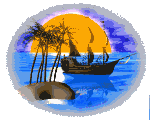
Patani Yg Diabai
ปัตตานีที่ถูกลืม

Photo Album
Sejarawan Patani
Sejawaran Siam
Sejarawan Luar
Peristiwa Kersik
Tragedi Takbai
Tempat Bersejarah
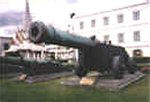
Sri Patani
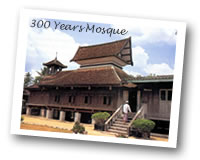
Masjid Teluk Manok
